Disclosure: Meeple Mountain received a free copy of this product in exchange for an honest, unbiased review. This review is not intended to be an endorsement.
There is a house not far from mine where, at any given point, as many as a dozen dogs will be lounging… on a trampoline. These are not small dogs, mind you. I’m not sure why the owners decided on a trampoline. Maybe their kiddos have grown and one day the dogs simply gave it a try to smashing results. Maybe an article on the internet said bouncing provides levity for the canine mind and body. I find it’s best to mind my own business and stick to slowing down every time I pass so the kids can count the dogs living their best life.
The truth is, I’ve never seen a cat on a trampoline. Perhaps that means I’ve simply never searched for such a thing on YouTube. But perhaps it means more. Could it be that dogs are more fun?
In 2017, AEG released Cat Lady, a drafting card game designed and illustrated by Josh Wood (Santa Monica), to generally favorable reviews. After roaming the house for four years, the cats must now face the reality that AEG has introduced the age-old pet supremacy debate to their line of card games to settle once and for all—via retail sales, ratings, and page likes and whatnot—which animal best tickles the human fancy.
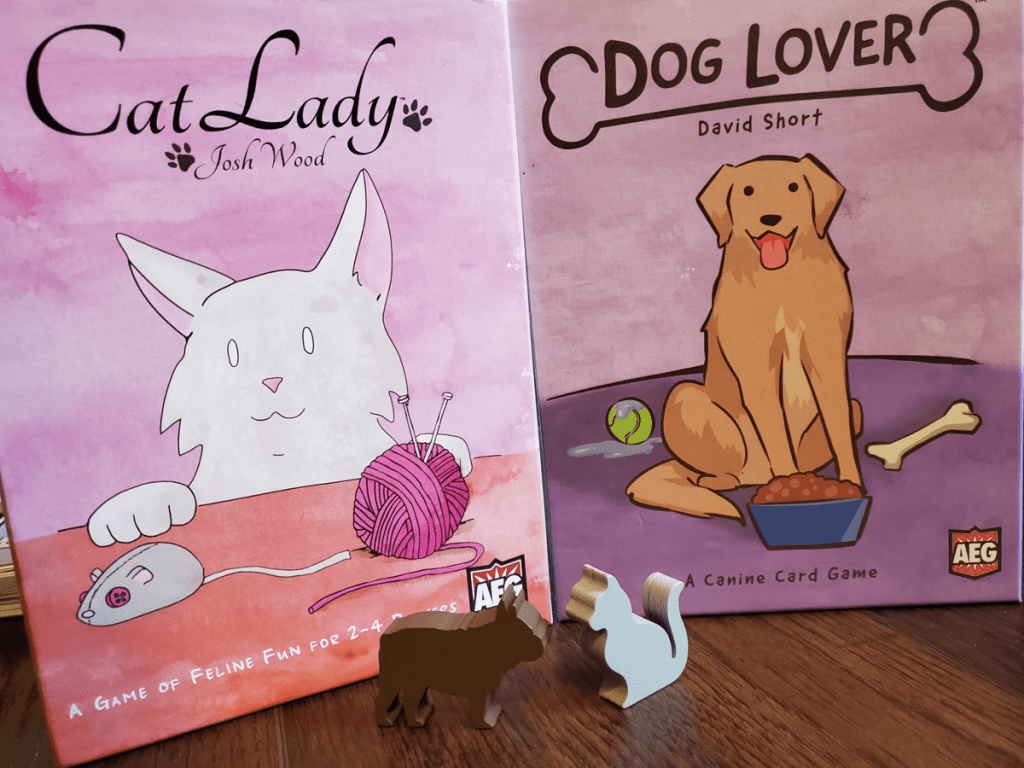
Dog Lover was designed by David Short (Automobiles) and illustrated by Kali Fitzgerald (Love Letter, Automobiles). At a glance, it would be easy to dismiss this canine continuation as little more than a copy of the original. Both are built on the same premise, using similar mechanisms. Both are rather friendly for non-gamers. But there are distinctions in the feel and the mechanics that separate them, leaving but one question: Are these dogs and cats a matter of either/or, both, or neither?
Hold all ap-paws until the end
Much like its feline counterpart, Dog Lover revolves around drafting cards from a 3×3 grid, but with an added twist. Rather than pulling cards in rows and columns, players utilize Trick cards that reveal a pattern of squares in the shape of a dog doing a trick. Players may rotate this card in order to claim a group from the grid that matches the pattern. A guard dog meeple prevents players from taking more than one card from the row or column it guards, and moves to a spot decided by the Trick card at the end of a turn.
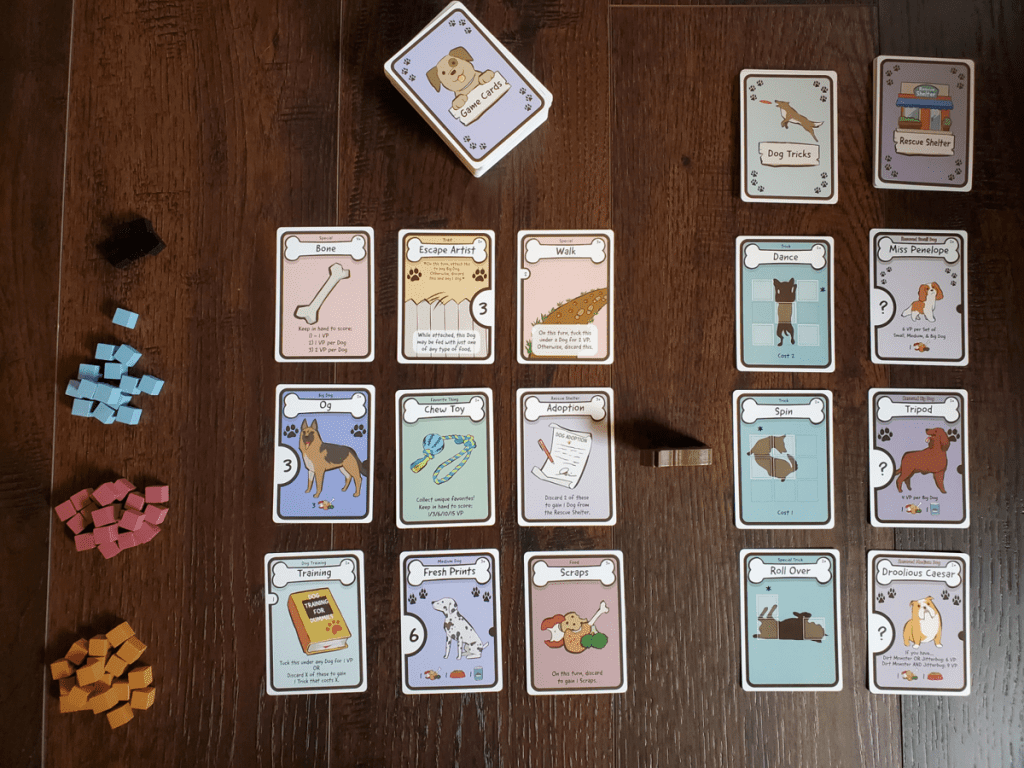
Acquired dogs are immediately laid into the player’s tableau to await food and maybe a taste of the good life. Players will also be hunting kibbles and bits and bits and… scraps. Food cards are immediately traded for corresponding cubes, but they are not officially given to a dog until the end of the game, when unfed dogs and wasteful food hoarding will be penalized.
Trait cards are the big addition to the grid. Players start the game with a dog in order to better accommodate this new feature right out of the gate. Traits must be immediately applied to a specific size dog—small, medium, or large. They add a bonus condition that can yield big points, usually based on tucking cards beneath fed dogs. The tuck mechanic allows dogs to accumulate additional points by gathering a Walk card or burying any number of otherwise useful cards for easy points.

The remainder of the cards sound a lot like Cat Lady. A variety of Toy cards can be collected for set points. Bones function like the old catnip, granting bonuses for fed dogs provided the player holds enough of them. Training cards are worth victory points tucked, or they can be spent to acquire additional Tricks. Adoption cards can be traded in pairs to rescue a dog from the shelter. The key decision with all the cards is whether they will be more valuable in hand or tucked underneath a sufficiently fed dog according to an acquired Trait.
The Fetch card adds a tactical wrinkle to the grid. The Fetch begins in front of the last player. Folks may trade this singular card back and forth from their tableau into the grid in order to claim an additional card on their turn. The catch is, they may then have to leave the Fetch behind for another player, who can claim it to use on a later turn. The Fetch is used independently of the draft, which means it might provide a way around the guard dog when the right card is just out of reach.
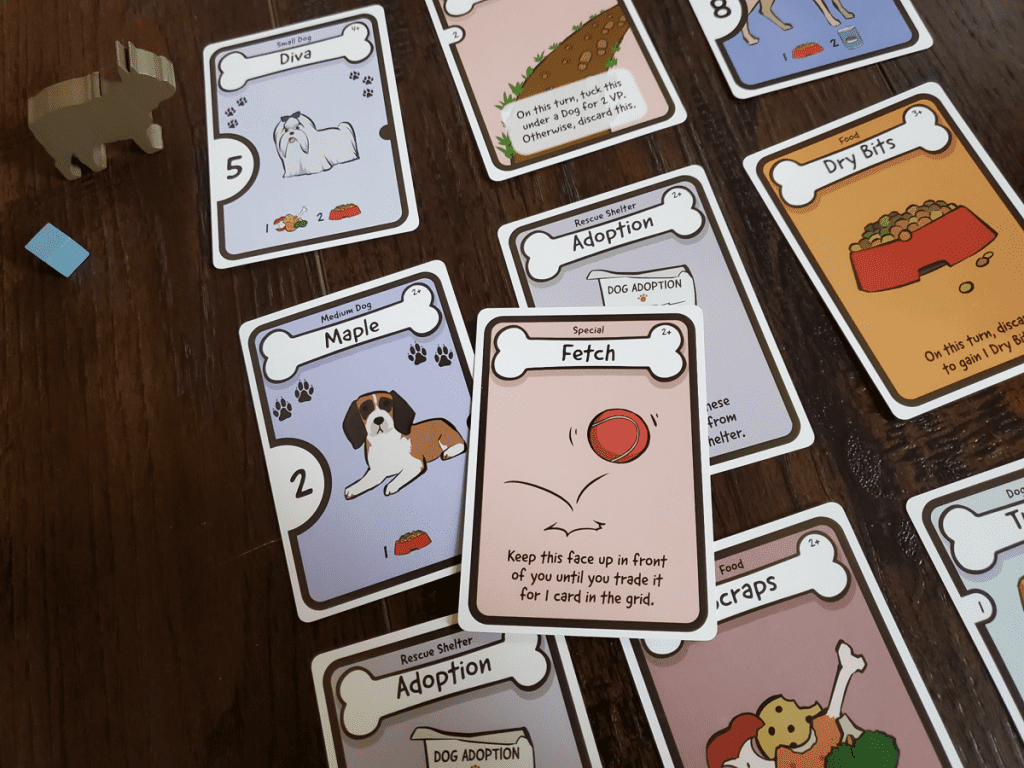
Rather than ending when the deck runs dry, a warning card is inserted before the end to signal the final round. This means there will always be a few cards that don’t see the light of day. Points are tallied and a canine crown is conferred.
Howl we decide?
There is no mistaking that with Dog Lover, AEG was ready to ratchet up the complexity after the saccharine sunshine of Cat Lady. Each of the new features adds time and consideration to nearly every player turn. The length of the game almost doubles, easily pushing to and occasionally past a half hour. Trick cards are constantly rotating looking for the most useful configuration of cards. Traits are shifting the landscape of cards in hand vs. on the table. The Fetch comes out at random times—or all the time—to transform an OK turn into a steal.
The art and punny humor is alive and well in the new iteration. Kali Fitzgerald illustrated a broader variety of pups in terms of size and breed. The names put forth familiar comfort and humor as Droolius Caesar and Muttley Crue hang out with Joey, Ichi, and Annabelle. The overall aesthetic reminds you that this game belongs in the Cat Lady family. I’m not sure how the genetics work out, but there’s no mistaking that they’re related.
I’m still trying to decide if I like the Fetch card. I like the idea of a Fetch, but I’ve yet to see it really make a difference. I’ve watched players try to greedily use and reuse it by playing it before going to the grid, only to then draft it right back. There’s no net gain, but it’s an option. I’ve watched players refuse to use it at all so that no one else has a chance to gain an advantage. That hardly seems right. It often lingers somewhere between a frivolous toy, which is where I want it to be, and a demeaning ruse. We’ll figure it out eventually.
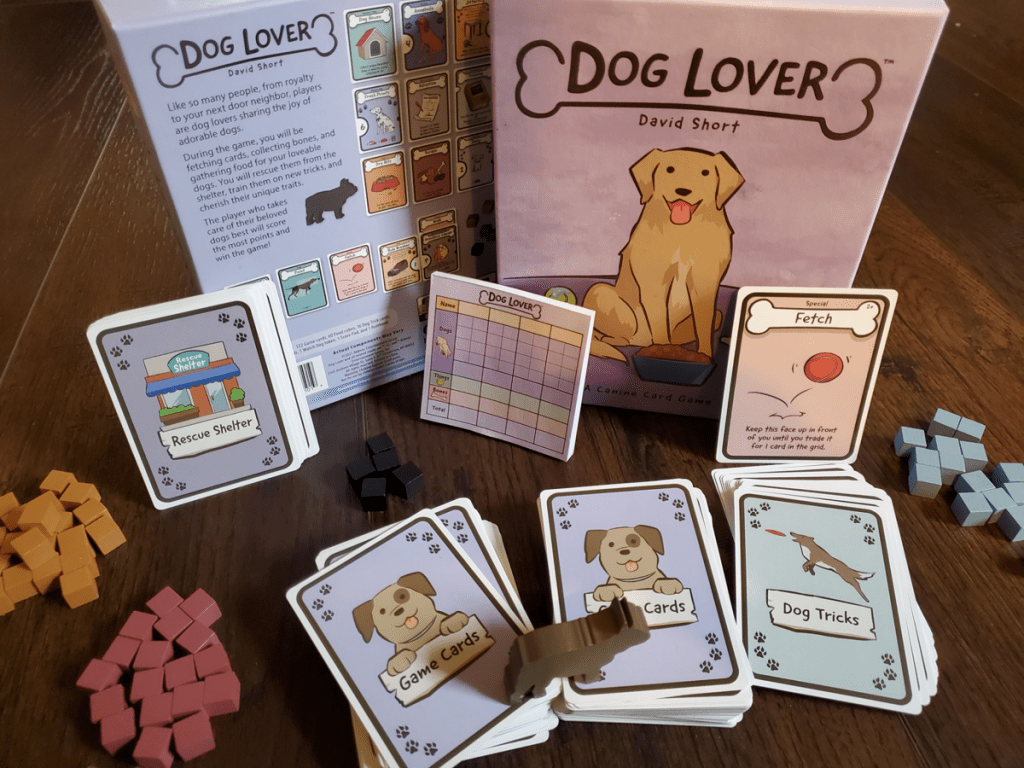
Much like the Cats, Dog Lover suffers from a slight identity crisis by comparison to the original. The cards are all canine, but the game feels more like an alley cat stalking along the fence. Perfectly capable of dashing along, but typically slower and more methodical. Each decision takes just a bit more time. Until you learn the cards, you have to pause to see what they do and how they’ll interrupt your existing flow by convincing you to tuck otherwise valuable cards. When the warning card appears to call it a day, you’re still smiling, but you’ve had to work a little harder for the love.
There are a number of reasons to view Dog Lover as the bigger and better sibling, even though it comes in the same size box. The Trick cards place an interesting limitation on card acquisition and create decision space as players sweat over whether to upgrade their drafting options. All the tuck options likewise bolster the strategic thought, which serves the dual purpose of scoring and pampering the dogs through card combos. It’s fun to beef them up and show them a good time. Last, but certainly not least, AEG gave us a scoring pad this time around!
In my experience, there has been no consensus winner between the cats and the dogs. Kiddos and adults alike request both at this point, depending on the available time and general mood. Drafting from the grid is still the highlight of both. It is surprising just how different they feel, even though they look very similar on the table. At this point, I’m happy to expand both and see what their worlds have to offer. I am certainly intrigued by the fact that David Short has hinted online at his ongoing efforts to combine the boxes into a unified game somewhere down the road. Imagine it: dogs and cats, living together, mass hysteria!! It’s hard to say at this point whether owning both is necessary, but they are a fun ride.
I’m just hoping someone out there is designing a trampoline card so these dogs can truly start living the good life.




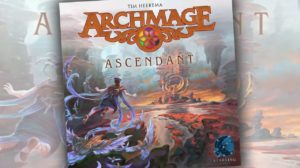
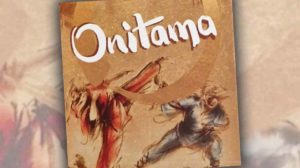






Add Comment